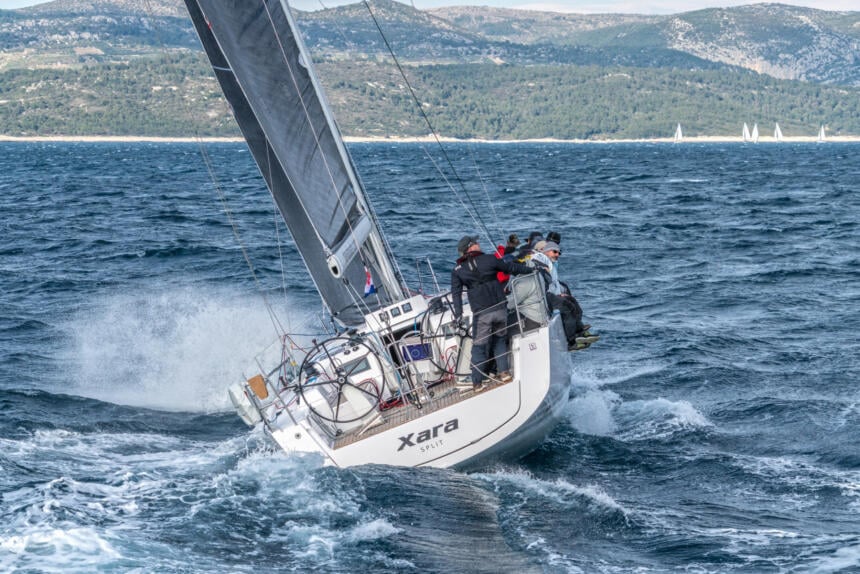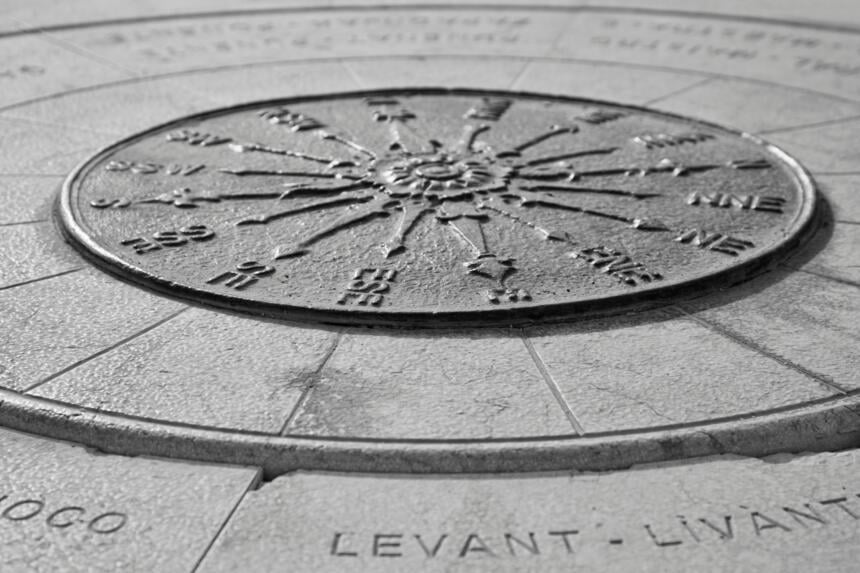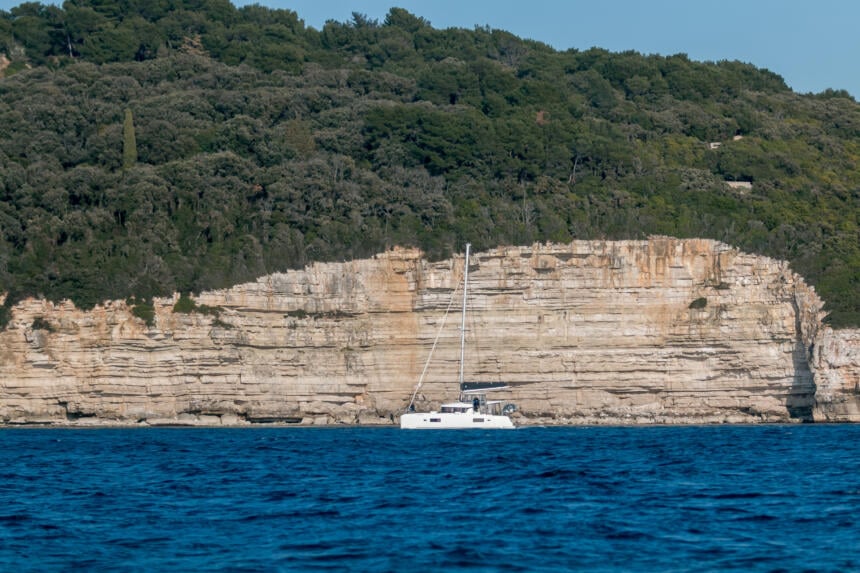Sailing the Adriatic: How Winds Impact Your Cruise
Are you ready to go sailing in the Adriatic? Read to learn more on the Adriatic winds, currents, and weather in general.
Navigating the Adriatic Winds: Tips for Sailors & Travelers
Croatia is a perfect summer sailing destination, thanks to its predictable and favorable wind patterns. In ideal weather conditions, the Adriatic winds are characterized by calm nights, making them perfect for anchoring and restful sleep. The early mornings offer smooth seas, allowing motorboats and those who prefer a gentle cruise—without strong waves or wind—to reach their next destination comfortably.
Unlike the Aegean Sea or the Ionian Sea in Greece, where strong winds can blow relentlessly day and night, Croatia’s Adriatic coast offers a unique balance—ideal for both relaxed cruising and thrilling sailing. This makes it one of the best sailing destinations, not just for its stunning coastline and islands, but also for its exceptional meteorological conditions.
Are you ready to learn more about the Adriatic winds, the weather, climate, sea temperature, and sea currents?
Where is the Adriatic?
Let’s start at the top – location! The Adriatic Sea is an arm of the Mediterranean Sea in Southern Europe. It separates Croatia and other countries of the Balkan Peninsula from Italy. Geographically, the Adriatic Sea is divided into South and North at cape Planka (near Rogoznica). The winds, weather, and the climates slightly differ in these two main regions. But, they also have a lot in common.
There are over 1300 islands and islets in the Adriatic Sea, and most of them, 1244 to be specific, are in Croatia. The northern part of the Adriatic Sea has the shallowest water.
Croatian counties in the North Adriatic include:
- Istria
- Primorje-Gorski Kotar (Kvarner)
- Lika-Senj (Lika-Senj)
- Zadar
- partial Šibenik-Knin
And in the South Adriatic we have:
- partial Šibenik-Knin
- Split-Dalmatia
- Dubrovnik-Neretva

Weather conditions in Croatia
Climate and weather conditions
The Köppen climate classification designates the climate in the North Adriatic Sea as humid and subtropical, with wet summers and cold and dry winters. The South Adriatic is classified as hot-summer Mediterranean climate. During the summer, the average air temperatures are between 27 – 30 °C (80 – 86 °F). Winters are quite cold because of the cold bura winds blowing from the land.
You can check the current marine weather forecast in Croatia at the official DHMZ site.
Sea temperature
Summers in the Adriatic Sea are warm! The sea temperature is typically from 22 to 30 °C (72 to 86 °F). This makes swimming or simply enjoying time in the water very pleasant. However, the temperature in the winter usually drops to 12 °C (54°F). Find more information about the weather during the summer season in our previous blog.
Sea currents
In general, sea currents in the Adriatic are not that strong and significant. They are much stronger along the west (Italian) coast.
In the winter the currents are mostly incoming along the Eastern Adriatic Sea, and in the summer outgoing along the Western coast. The dominant Adriatic currents flow counter-clockwise. They start from the Italian city Otranto, follow the Croatian coast to the north, and lastly back towards the Italian coast. The speed of the currents in the Adriatic Sea has an average of around 0.5 knots (0.9 km/h). Besides, their speed changes in specific areas and times.
Thunderstorms
Even though Croatia is famous for very sunny weather, with for instance around 2700 sunny hours in Hvar, thunderstorms are still possible even during the long hot summer. However, bad weather conditions such as are more common in the North Adriatic. They usually quickly pass, you just need to find a safe harbor to weather it out.

Adriatic Winds
Winds are one of the most significant components of the weather on the Adriatic. The most important winds on the Adriatic are Bura and Jugo. Luckily, during the summer, they are usually less potent. But the true helper in your sails – is the Mistral. It’s very trustworthy and just strong enough to get you almost anywhere.
If you’re interested in the current situation of the winds in Croatia (North Adriatic) head on over to windy.com.

Bura
Certainly, one of the infamous winds in Croatia, and particularily in the North Adriatic is the queen – Bura. It is typically associated with cold weather. Bura is a cold and very strong northeast wind blowing from the mountains. In some cases, bura might cause serious trouble to navigation due to its sudden appearance and gusts that make it very unpleasant and unpredictable. Nevertheless, bura often means fresh air with plenty of sunshine.
Throughout winter, bura might last from 12 hours to 2 days. During these times, bura’s speed can accelerate even up to 60 knots (111 km/h). However, on average, it remains around 35 knots (64 km/h) in the winter. As a matter of fact, the strongest winds in Croatia blow in the area underneath the Velebit mountain. Because of the specific position, the winds in this area can blow in multiple directions. And the highest velocity ever officially measured in Croatia was in December 1998 at the Maslenica bridge – 248 km/h (154 mph).
Despite the higher possibility of extreme bura weather, sailing off-season has many advantages. If you wish to know which, read our blog on why sailing off-season is so great. But, be aware of possible threats and check weather conditions more often than you would in the summer. Above all, head to any warnings either by the meteorological services or our base manager.
Jugo
Sailors associate this wind with bad weather. Jugo is an east-southeast warm and humid wind that blows from the islands towards the seaside. It’s sometimes called scirocco. Even though the wind is warm, it typically brings cloudy or rainy weather.
Moreover, jugo unlike Bura is a constant wind that gradually gains strength over time (a day or two). Here are a few signs that announce the jugo:
- a calm sea
- weak winds from changing directions
- an unclear horizon
- a rise in temperature and humidity
- a gradual air pressure drop
- the waves from the southeast become bigger and bigger
Once it starts, it causes high and choppy waves.
People in Croatia usually blame jugo for everything negative that happens to them. Anything from low productivity levels to broken legs or bad grades in school or burnt lunch. If you aren’t having a good day, just blame it on the jugo “To ti je jugo!”. And maybe you will feel better, or at least when it blows over! Jugo appears more often and stronger in the south. Jugo has only the fifth wind velocity score ever measured in Croatia. It was recorded in Palagruza and the speed was almost 205 km/h (127 mph). The first score (as mentioned above) and the following three are held by the infamous Bura. The Jugo blows more frequently in the winter and spring in the North Adriatic, whereas in the summer it mostly appears as a local wind and stays in the south.
Maestral
One of the defining winds of the Adriatic is the Maestral, a reliable thermal breeze that typically starts around noon, reaches its peak strength around 5 PM, and gradually subsides in the evening. This wind is a dream for sailors, providing steady conditions for an exhilarating sailing experience. As the Maestral dies down, the Adriatic once again settles into a peaceful state, ensuring a tranquil night at anchor.
Sailors know it as a “friendly wind” that comes from the sea to the land. Moreover, mistral blows during the anticyclone. It’s been known under this name since the 15th century.
For the most part, it feels like a gentle summer breeze. Therefore, mistral will not negatively affect your holiday. It will only refresh you during the hot summer days. Also, it is typically stronger in the South Adriatic.

Tramontana
The name tramontana comes from the Latin virtues transmontanus, which means wind blowing through the mountains. It is a common name for the northern winds in many parts of the Mediterranean. It is a cold, medium-intensity wind that blows most often in good weather. Its appearance is a sign of improving weather.
Levant (levanat)
The levant, as the name describes, is the wind coming from the east. It is usually a moderate, rarely strong wind that blows when the weather is cloudy, wet, and rainy.
Ostro
Ostro or lostrac is a southerly wind. It is a hot and humid wind that typically does not blow very long, but can develop a significant force. A low-intensity ostro is called lostrine, a high-intensity lostracine.
Burin
Burin is a gentle summer wind or breeze, kind of welcoming on a hot summer day. Blowing from the north at night, it announces a clear sky.
Lebic
The southwest winds in Croatia, in the Adriatic, have one of two names: lebic or garbin. The lebic is most commonly a dry and warm wind, which blows after the jugo when the Mediterranean cyclones pass over the land to the west and the center of our country. It usually does not last very long, but it can blow very hard (lebicada).

Get on board with us!
Now that you know more about the Adriatic winds in Croatia, you are ready for the perfect sailing holiday. Besides the good weather here, there are many beautiful spots to see. Some of the best ones are only (or best) reachable by boat. Select one of our top catamarans, sailboats, or motorboats from our new charter bases in Split and Rogoznica.
Simply contact our charter team and enjoy sailing with us. Our charter team will get back to you as soon as possible. Your dream vacation is only one click away!






